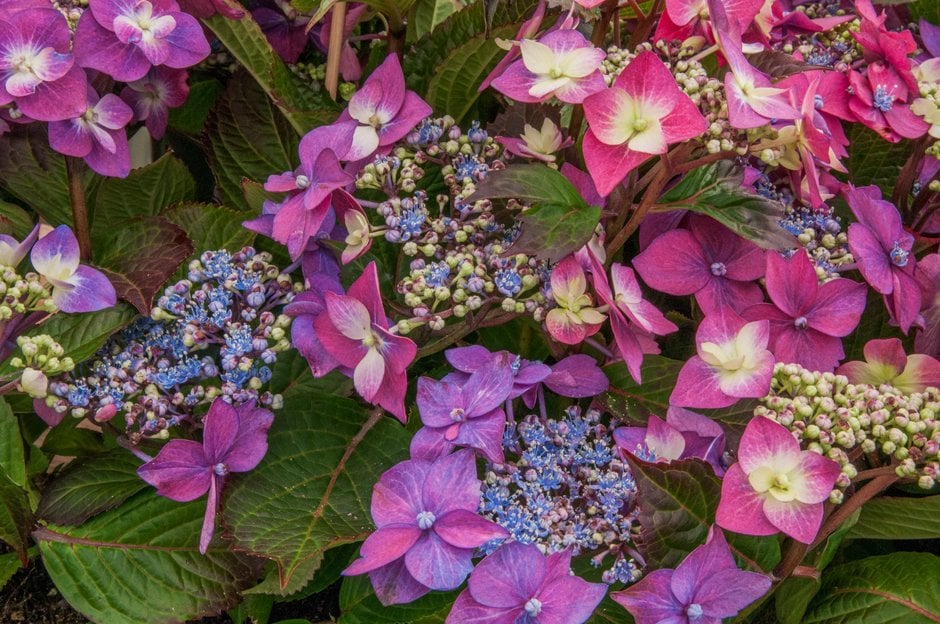Size
Ultimate height
0.5–1 metresTime to ultimate height
5–10 yearsUltimate spread
0.5–1 metresGrowing conditions
Moisture
Moist but well–drainedpH
Acid, Alkaline, NeutralColour & scent
| Stem | Flower | Foliage | Fruit | |
| Spring | ||||
|---|---|---|---|---|
| Summer | ||||
| Autumn | ||||
| Winter |
Position
- Full sun
- Partial shade
Aspect
East–facing or South–facing or West–facing
Exposure
Exposed or Sheltered Hardiness
H5Botanical details
- Family
- Hydrangeaceae
- Native to GB / Ireland
- No
- Foliage
- Deciduous
- Habit
- Bushy
- Potentially harmful
- Skin allergen. Wear gloves and other protective equipment when handling. Pets (dogs, cats): Harmful if eaten. For further information and contact numbers regarding pets, see the HTA guide to potentially harmful plants
- Genus
Hydrangea can be deciduous or evergreen shrubs, or self-clinging climbers, with flowers in clusters usually comprising both small fertile and more showy sterile flowers; often good autumn colour
- Name status
Trade
- Horticultural Group
- Lace cap hydrangeas are compact deciduous shrubs with broadly ovate leaves and flat or gently domed clusters of small fertile flowers, with showy sterile flowers around the margin
How to grow
Cultivation
Grow in any moist but well-drained soil in partial shade or grow in sun if soil remains reliably moist. Improve chalky soils with organic matter to support good growth. See shrubby hydrangea cultivation for further advice
Propagation
Propagate by softwood cuttings in early summer, or by hardwood cuttings in winter
Suggested planting locations and garden types
- City and courtyard gardens
- Coastal
- Cottage and informal garden
- Low Maintenance
- Banks and slopes
- Cut flowers
- Flower borders and beds
- Hedging and screens
Pruning
See pruning group 4 for further advice and video guide
Pests
May be susceptible to aphids, capsid bug, hydrangea scale and vine weevil
Diseases
May be susceptible to a leaf spot, powdery mildews, grey moulds (Botrytis) and honey fungus (rarely)
Get involved
The Royal Horticultural Society is the UK’s leading gardening charity. We aim to enrich everyone’s life through plants, and make the UK a greener and more beautiful place.
